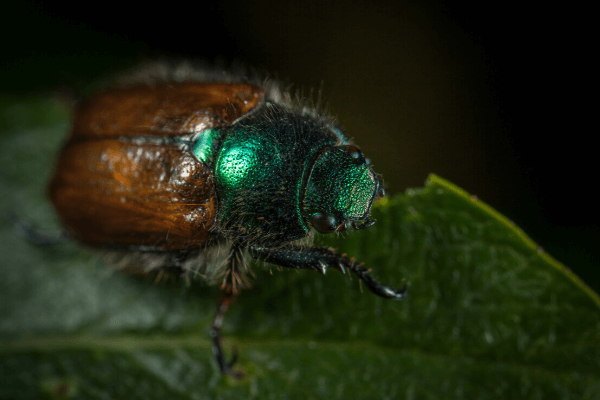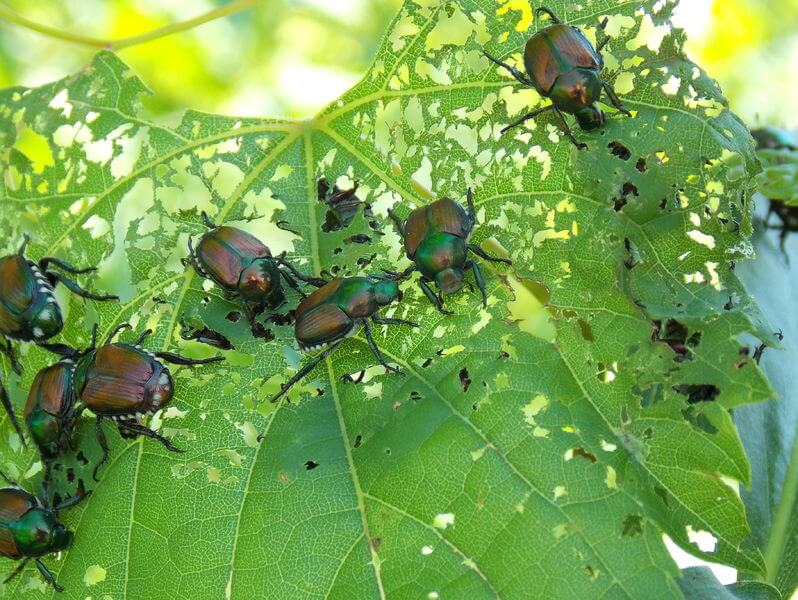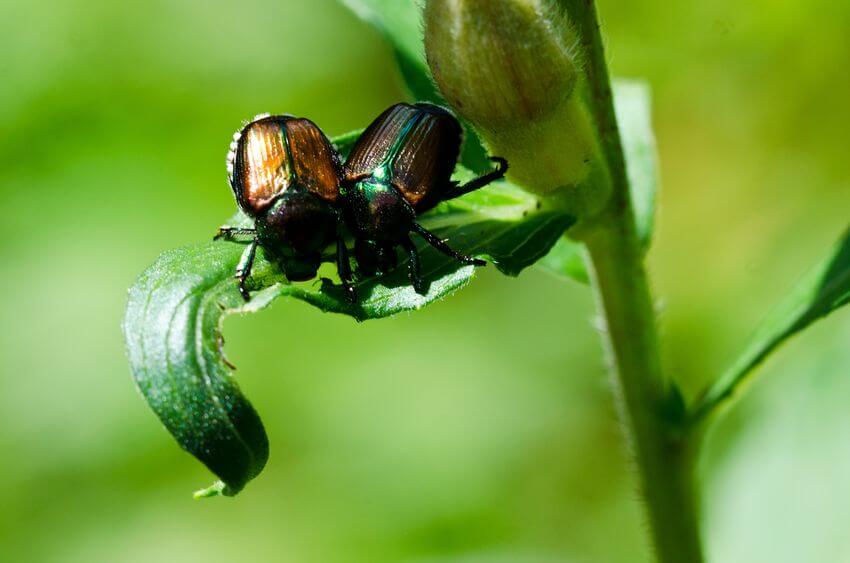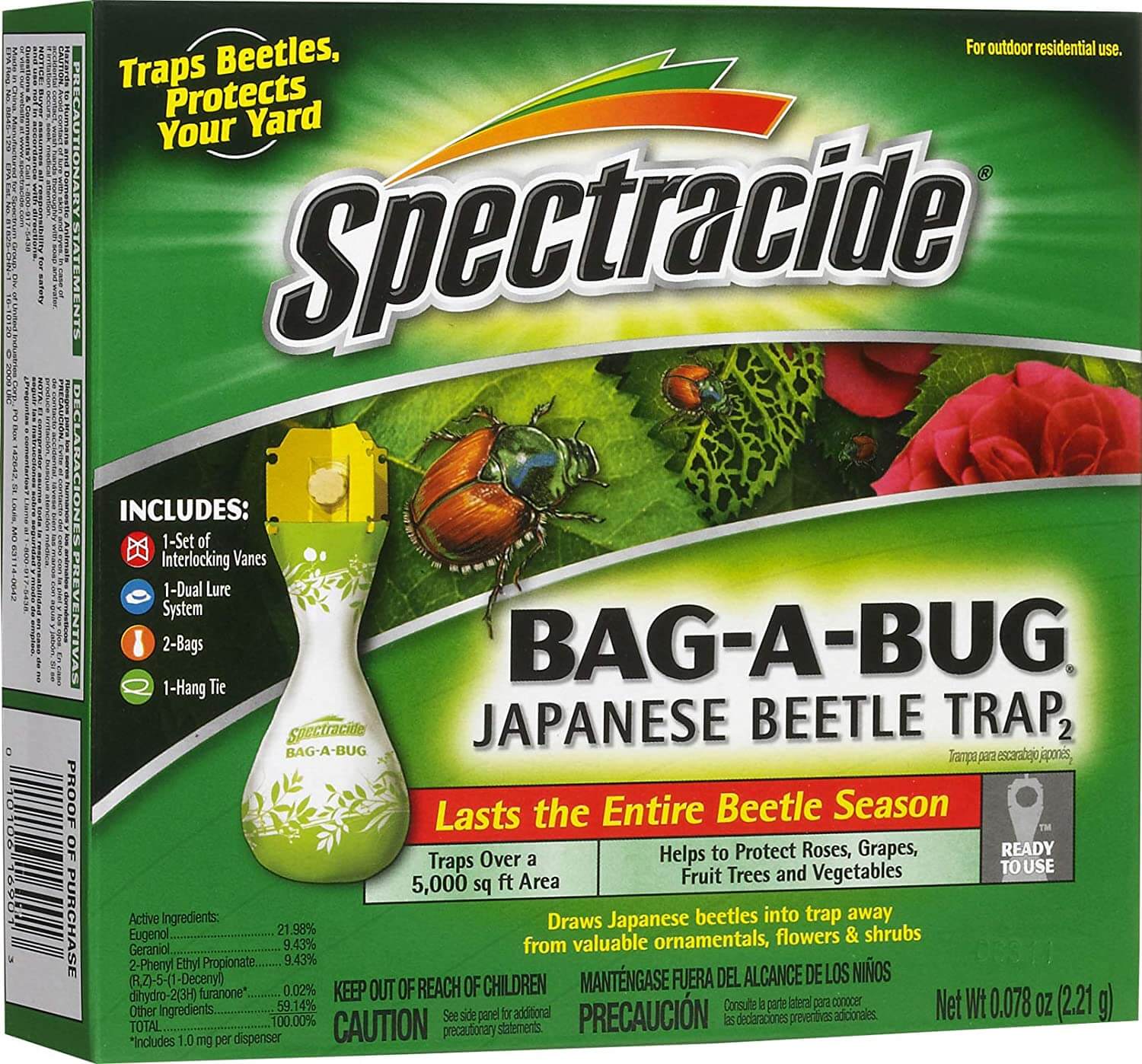- Home
- Outdoor Pests
- Organic Japanese Beetle Control
Organic Japanese Beetle Control
This post may contain affiliate links so I earn a commission.
Looking for some organic Japanese beetle control options?
You’ve come to the right place.
The Japanese beetle might not be the first creature that comes to mind when you think of dangerous outdoor pests, but to a gardener or homeowner, the name “Japanese beetle” alone is enough to get him shaking in anger.
If you’re one of these people, never fear.
You don’t have to resort to harsh chemicals in order to get these pests under control.
All you need to do is take a few simple steps to regain control of your garden.
What Are Japanese Beetles - Why Are They Problematic?
First discovered on nursery stock from Japan nearly 100 years ago, Japanese beetles were first discovered in New Jersey before spreading like wildfire to almost all of the states east of the Mississippi River.
Found even in Colorado, California, Oregon, and Wisconsin, these pests can wreak havoc on your garden and lawn.

Japanese beetles are roughly half an inch long and a telltale metallic blue color.
They have coppery-looking wings and are most easily detected on bright, warm days.
They eat all kinds of plants, including roses and grasses.
In fact, Japanese beetles are known to destroy the leaves of more than 300 different types of plants.
Japanese beetle larvae are plump white grubs that feed on the roots of plants.
They are particularly dangerous to lawns and can produce large splotches of dead or dying grass.
In Japan, Japanese beetles are not viewed as a major nuisance.
This is because there is minimal turfgrass available for feeding along with a large number of natural predators for this pest.
In the United States, however, that is not the case.
Organic Japanese Beetle Control - Prevention
Preventing Japanese beetles is definitely easier said than done, but there are a few ways you can keep them from decimating your crop.
One way is to place a floating row cover over your sensitive plants.
These will not harm the growth of your plants but will instead keep Japanese beetles from decimating your crops.
Of course, they won’t be as effective on your lawn.

Pay attention to their patterns, too.
In most areas, Japanese beetles will first appear in the spring.
This depends on the weather - if it’s cold and rainy, they might not appear until the end of June.
However, once you see your first beetle, you have a problem.
They can inflict damage within 48 hours and one beetle attracts many more, inciting a feeding frenzy.
Start taking organic Japanese beetle control measures as soon as you see a single beetle.
Finally, keep in mind that Japanese beetles like to lay eggs in moist soil.
Holding back irrigation, if possible, during prime Japanese beetle egg-laying times, can also help reduce populations of these pests.
Organic Japanese Beetle Control Options
There are a few simple steps you can take to control Japanese beetles on your lawn or in your garden - without having to resort to harsh chemical treatments.
Manual Control
There are a couple of ways you can manually control Japanese beetles in your garden.
The first is to go out every day, twice a day, in the late evening and early morning.
Gently shake beetles off the plants and onto groundsheets.
You can then drop them into buckets of soapy water to destroy them.

You can also simply pluck beetles from the plants and drop them into soapy water, too.
Just make sure you kill any beetles you remove, or they will climb right back up onto your plants.
Organic Japanese Beetle Control With Mass Trapping
Mass trapping is an organic Japanese beetle control method that has been used with mixed rates of success.
Proponents say that the pests can reduce plant damage as the lures can catch millions of beetles each year, while advocates against mass trapping say that the traps lure the beetles to areas in which they otherwise would not be attracted.

Either way, mass trapping is a technique you may want to consider on your property.
It includes the use of a Japanese beetle sex pheromone combined with a basic catching device, like a trash bin.
Add Nematodes
Nematodes are small, worm-like parasites that are invisible to the naked eye.
Sprinkle them on your lawn or around your plants, and these beneficial plants will kill Japanese beetle larvae or grubs.
Use Milky Spore
Milky Spore, also known as Bacillus popilliae, is a naturally-occurring bacterium that kills white grubs that are burrowed beneath your lawn.

The grubs ingest the spores of this bacterium, and when they die, they release new spores into the surrounding soil - so you don’t need a lot of Milky Spore to make an impact.
You apply it like a pesticide, doing so at any time of the year in which the ground is not frozen, and simply wait for it to take effect.
It does not damage any of your plants.
Try Parasitic Wasps
Despite the fact that Japanese beetles are not native to the United States, there are a few enemies that can help keep these pests in check.
There are some parasitic wasps that are believed to be effective predators, but they can be tough to find for sale commercially.
Give Companion Planting a Try
One of the best and most natural ways to eliminate Japanese beetles is to consider companion planting.
For example, if you plant buckwheat between rows of blueberries, you may see reduced numbers of these pests later on.
For whatever reason, Japanese beetles prefer to lay their eggs in fescue grasses more than warm-season turfgrasses.

There are other plants that are viewed as undesirable to Japanese beetles, too, including boxelder, dogwood, hemlock, magnolia, and lilac, just to name a few.
As a last resort, you might want to try planting “trap” crops for the Japanese beetles.
You can use flowers that tend to attract the beetles, like hollyhocks and marigolds, to serve as decoys.
The beetles will be attracted to these flowers instead of your vegetables, and you can then use the bright colors of the flower to serve as a clear backdrop for you to pluck the pests from the plants.
Organic Japanese Beetle Control - Should You Use Pesticides?
Whenever possible, try to avoid using synthetic or systemic pesticides on your plants to get rid of Japanese beetles.
While these do control Japanese beetle infestations when they are at their most severe - and they do so quickly - they can have detrimental effects on the environment.
They can reduce soil fertility and can even kill off bees and other essential pollinators.
Instead, consider one of these organic Japanese beetle control methods.
You’ll be able to get your infestation under control - without any other major side effects.



